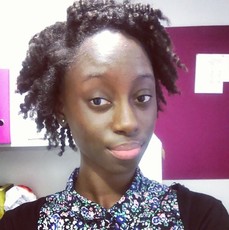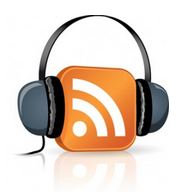
Essential oils are extremely potent. They always have to be diluted in a carrier oil before use.
Generally, if you are an adult woman that's not pregnant you should aim to include a total of 12-15 drops for every 30 ml (1 oz.) of carrier oil. If you use too much carrier oil (or too little essential oil) the benefits of the essential oil will be eroded. Warming the carrier oil before use enhances the effectiveness of the essential oil. However, don't make the carrier oil too hot as you will kill the vitamins and phytochemicals.
USAGE: These are the three main ways to use essential oils for hair. 
1. Massage into scalp as often as you remember
Get a small dark plastic (or better glass) bottle and make the following blend.
Massage this into your scalp every night. This 30 ml blend can last upto 2 weeks. Store in a cool dark place. Alternatively, spare yourself the effort and get Neno Natural's Hair Growth Stimulator which already includes the best blend of these essential oils. 2. Hot Oil Treatment A hot oil treatment will make your natural hair feel softer and more bouncy. Do the hot oil treatment before your wash routine . Add drops of essential oil to a carrier oil, then baggy your hair with a shower cap for 20 to 30 mins. For a specific formula see Neno Natural's Growth Boosting Hot Oil Treatment. 3. Add to shampoo or conditioner Essential oils can be used to boost the performance of your regular shampoo or conditioner. Just add a few drops. Always add the essential oil to the portion of shampoo or conditioner you want to use rather than to the whole bottle. Use a small mixer bowl or old plastic/glass jar. I use an old espresso cup. 
Get your FREE ebook on How To Grow Long, Healthy Natural Kinky or Curly Hair. You might also like: Working with Essential Oils - Understanding Dilution
A while ago I went on holiday and unfortunately discovered that the conditioner I had taken does not work for my hair.
I was away for two weeks in a country where products for natural black hair are not available; I desperately needed to condition my hair so I googled for simple, natural methods and was surprised to find that the ingredients in Neno Natural's Hair Growth Stimulator were mentioned as being good for conditioning hair and for hot oil treatments. I washed my hair with water, sprayed Neno Natural's Hair Growth Stimulator on, put a shower cap over my head for a couple of hours, then I rinsed my head with cold water and plaited it. I didn't add any moisturiser at all because my hair was already adequately oily. What you see me unplaiting here is the result of that hair conditioning session. I kept the plaits in for the duration of the flight back and for a couple of days when I got home. Given the choice, I would rather mix essential oils with my conditioner but I am very happy with the results I achieved using just Neno Natural's Hair Growth Stimulator. If you want to make your own oil use any one of the following as a base:
Then to that mixture add three or four of the following essential oils:
That's pretty much it! Enjoy. The above said, note that this was a short-term solution and that this is not a "real conditioner" but something you can add to your routine. It is essentially a hot oil treatment. At the moment I do a hot oil treatment similar to this every other week before washing and conditioning my hair. 
Get your FREE ebook on How To Grow Long, Healthy Natural Kinky or Curly Hair. 
If there is one topic that gets me really wound up, it's this one. People assume that "organic" means healthier or unrefined but it does not mean either one of those things.
Outside of chemistry "organic" means that a product was grown or farmed without the use of pesticides, herbicides or any other "artificial" "chemicals" - I also hate the word chemical because EVERYTHING is a chemical! Salt is sodium chloride, table sugar is sucrose; just because you know its "regular" name does not make it "not a chemical"! Infact, lots of chemicals that you don't think are not edible become edible once they have been neutralized with another chemical, anyway, I digress. So exactly what is wrong with pesticides and herbicides? Pesticides are chemicals designed to kill bugs and insects that might destroy a crop. Herbicides are a special type of pesticide used to kill unwanted weeds. In the US, 70% of pesticides used are herbicides. 
Pesticides (including herbicides) can lead to allergic reactions and other side effects if consumed in high amounts. However, just using an agricultural product that comes from a farm that uses herbicides or pesticides should not cause you any harm at all.
Importantly, it's extremely hard to prove that pesticides were not used in the farming of a product especially if that product has changed hands several times over. If you are concerned about your products being organic then you should buy directly from the farmer. Even a trusted commercial supplier who labels something organic may have no idea if it really is. They just have to trust whoever supplies them! Can a product be "organic" but still be refined. Yes, and frequently it is. A vegetable butter for example may be refined to change its colour because the producer wants a specific colour for all butters of that kind. For example, the colour of shea butter will vary from one harvest to the next because natural products do that - they don't come out with the exact same colour and composition every time; things like weather (sun, rainfall, etc.) impact crop production. A manufacturer can completely remove the colour using heat (thereby killing vitamins and minerals) but that butter would still be organic because herbicides were not used in farming it. If they replenish the butter with lots vitamins and minerals then perhaps that is okay but they might not do that. Importantly, note that most products that are labelled organic are not 100% organic; only a percentage of ingredients need to be organic for a product to be legally allowed to have the label "organic". 
How About Dr Organic
That is just a brand name, the person behind the brand is not a doctor of any sort. Also, some of their ingredients are not organic. Their website says they simply try to source organic ingredients and where they can't source something organic they use they next best "natural" alternative. You know how I feel about the term "natural". Sorry to burst your bubble if you were in one. This is not to say this isn't a good brand - just that you shouldn't be blinded by brands and the look of things. 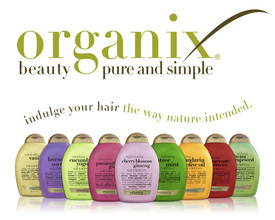
And Organix Hair?
Not organic at all - just a brand name. Huh? Yeah, don't be mad, they never made a claim to be organic! Refined vs. Unrefined vs. Organic "Unrefined" is a better term to watch out for than organic. If something is refined you want to know how it was refined. Some refinement is useful, e.g. a butter that will be eaten may need to be refined to remove toxic elements that are naturally found in it. I hope this helps you decide which products to buy and how not to be misled by clever marketing. 
Get your FREE ebook on How To Grow Long, Healthy Natural Kinky or Curly Hair. You might also like: Ref: Herbicide, drorganic.co.uk 
There are four key factors to consider when you are looking for a quality essential oil:
1. The quality of the plant material used If you are super eco friendly then you may be as concerned about the quality of plant material that you use for beauty products as you are about what you eat. The best plant material in your case would be plant material grown in the wild, far away from polluting cars and factories and grown without pesticides, herbicides and other "unnatural" stuff, i.e. organic essential oils. Personally, I am not too concerned! I won't pay the premium for organic things that will be applied externally. 2. The Plant source Some essential oils have different varieties. Sometimes this means no more than the essential oil coming from a different country or region but at other times the essential oil comes from such a different species of the plant or tree that its therapeutic benefits are completely different. A good example here is cedarwood essential oil. 
3. Extraction method
The best quality essential oils will have been extracted using:
Not so ideal are essential oils produced by:

4. Blends - bastardised essential oils
Some essential oils are blended with a cheaper essential oil to create a higher profit for the producer! Apparently this is common knowledge in the essential oil industry and is called "making a soup". Of all the things that can impact the quality of an essential oil this is the one that annoys and concerns me the most. When I buy an essential oil I do not want it to be blended with anything else. Here are examples of common blends that I found in The Aromatherapy Encyclopedia by Carol Schiller & David Schiller:

To ensure you are getting a good quality oil and that it is the exact oil you want, read the details and make enquires to the supplier if the details are not clear. Get your FREE ebook on How To Grow Long, Healthy Natural Kinky or Curly Hair. You might also like:
Ref: The Aromatherapy Encyclopedia by Carol Schiller & David Schiller How Are Essential Oils Extracted From Plants? (Steam distillation, CO2 Extraction, Cold Press, etc.)23/1/2014
The way that an essential oil is extracted will help you determine whether or not you are buying a good quality oil. If you jump on eBay or Amazon to buy essential oils you will see that some are stupidly cheap - avoid those, they were probably extracted using one of the cheap methods that destroys most of the good stuff in them; or worse, the essential oil may have been diluted with something cheaper oil to increase the seller's margin! Yes, this happens.
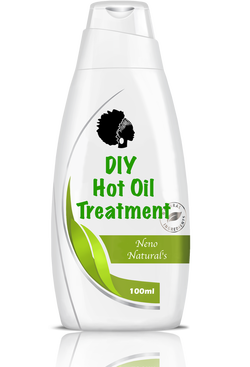
Okay, so how exactly are essential oils extracted from plants?
Steam distilled, CO2 extracted and cold pressed essential oils are the purest and best quality. All the information below this line is purely optional - extras for the super keen mixtress - the process names above are enough for you to go shopping for good quality essential oils. 
1. Steam distillation
Steam distillation is represented in the diagram. It is the most common method used to produce essential oils. Steam from boiling water is used to extract the essential oil from plant material. The steam rises and passes through a cold coil thereby turning into liquid. Essential oils float on top of the water in the second vessel; these are skimmed off and properly separated from the water. The remaining water is also useful because it can be sold as a "floral water" - floral waters possess many of the qualities of an essential oil and can be used instead of actual water in my DIY Hair Care Recipes. 2. Water distillation Hot water is used instead of steam. Some plants e.g. lavender do not take well to this method if the are left exposed to the hot water for too long much of the goodness in the essential oil is destroyed. Water distillation can be done under lower pressure to preserve more of the plant's essence and goodness. Flower blossoms and finely powdered plant material can be extracted well with water distillation. Both essential oils and floral waters a.k.a. hydrosols are produced using this method. 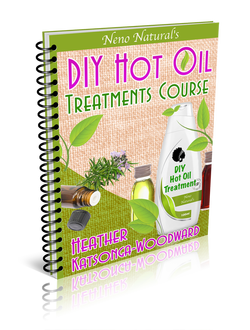
3. Carbon Dioxide Gas Extraction
Carbon dioxide gas extraction uses carbon dioxide gas, high pressure, low temperature and expensive equipment to extract essential oils. There are two types: a. Select carbon dioxide gas extraction In the select method essential oil is extracted at a temperature of 31 degrees celsius (88F).
b. Total carbon dioxide gas extraction In the total method a higher temperature is used. The essential oil produced contains more essence from the plant is thus a little better than the select method. 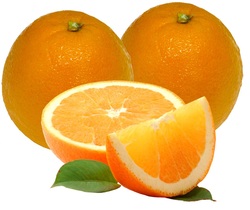
4. Cold Pressed Citrus Oils
This is only done for citrus fruits.
5. Maceration extraction With maceration, flowers (e.g. rose, jasmine) are soaked in hot oil so that their cell membranes are ruptured and the essence absorbed into the hot oil. The oil is then separated out and the essential oil bottled. This is similar to the solvent method but hot oil is used instead of a solvent. 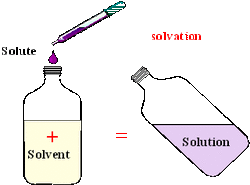
6. Solvent extraction
With the solvent extraction method plant material is soaked in a solvent e.g. petroleum ether, methanol, ethanol or hexane. The cell membranes of the plant material are ruptured and the essence absorbed into the chemical. The solvent is then separated and the essential oil bottled. However, some chemical residues are left from the solvent so the resulting oil is not pure. The amount of solvent left could range from 6-20% with some solvents. With hexane, however, the residue left is said to be 10ppm which is a very low concentration; it's equivalent to 0.001%. Personally, if I could prove that the solvent used was hexane and the price of the essential oil was comparatively low just for this reason then I would be happy to take my chances on this one because I spend a small fortune on ingredients for my DIY Hair Care Recipes. 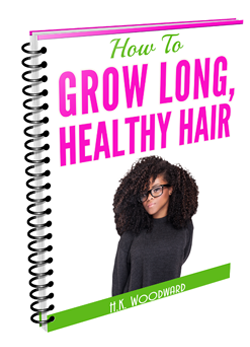
Get your FREE ebook on How To Grow Long, Healthy Natural Kinky or Curly Hair. You might also like: Ref: The Aromatherapy Encyclopedia by Carol Schiller & David Schiller; about.com; terrapinfamily; essentialoils.co.za: solvents, maceration; fao.org 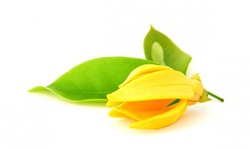
I don't expect a newbie mixtress to start off with a huge collection of essential oils from day 1; I certainly didn't.
In my opinion these are the six most important essential oils for a kinky haired girl:
Except for bergamot I have used all the other 6 essential oils for a very long time. I started using lavender, rosemary & ylang ylang in 2006 for massage. I added peppermint a little later on and when I went natural in 2011 I immediately added cedarwood and thyme because I knew they were reputed to be great for hair growth. In 2013, I added bergamot - I love the smell and it's also great for weak, dull or thin hair.
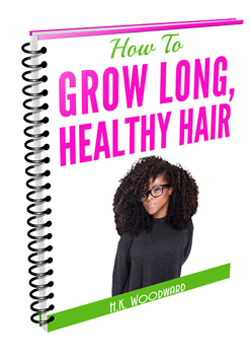
Get your FREE ebook on How To Grow Long, Healthy Natural Kinky or Curly Hair. You might also like:
Ref: The Aromatherapy Encyclopedia by Carol Schiller & David Schiller 
The reason is simple - many essential oils can stimulate the uterus thereby causing premature labour. This is great if your baby isn't coming out when it's due but is definitely not ideal if you haven't come to full term.
Interestingly enough certain foods can have the same stimulating effect on the uterus; this includes but is not limited to celery, carrots, parsley, basil, bay leaves, marjoram and safflower oil - who would have guessed?! I'm scared! That said, two or three drops of the following essential oils are thought to be safe during pregnancy:
Essential oils in bold are used in some of my DIY Hair Care recipes. Unfortunately, my source book does not advise whether these two or three drops can be a mixture of several oils, so I can neither confirm nor deny whether you can combine the oils and which combinations are safe. To be on the safe side I would just use 3 drops in 30ml (or grams) of carrier oil. No more. That would be roughly a 0.5% dilution. The effects of essential oils can also be passed on from mother to infant so be cautious with your use of essential oils whilst you are breastfeeding. Basically, don't be a hero baby girl, consult a doctor or other medical specialist if you want to use essential oils! Alternatively, just use fragrance oils. 
Get your FREE ebook on How To Grow Long, Healthy Natural Kinky or Curly Hair. You might also like: Neno Natural's DIY Hair Recipes Ref: The Aromatherapy Encyclopedia by Carol Schiller & David Schiller 
I get quite a few emails from people with a scalp problem seeking my input on products etc. Whilst I am not a doctor I have discovered that if you have scalp psoriasis the following carrier oils and essential oils can help to temper the problem.
Keep the lists in mind when you're buying commercial products or whipping up your own recipes using my DIY Hair Product Academy.

Get your FREE ebook on How To Grow Long, Healthy Natural Kinky or Curly Hair. You might also like: Ref: aromantic.co.uk, Carrier Oils by Len Price 
Personally, I have only ever used Atlas Cedarwood also known as Moroccan Cedarwood, Atlantic Cedar, African Cedar, or Libanol.
According to edenbotanicals.com Atlas Cedarwood and Himalayan Cedarwood are the only two that they would recommend. The Cedarwood essential oil of this variety comes from a large, aromatic tree which has historically been used for medicine and cosmetics. I partially agree with Eden Botanicals but I would add two more to the list: Cyprian and Lebanese, these are also true cedar. So, to summarize, the best type of Cedarwood essential oils to use if you want the real thing are those from:
Chinese, Kenya, Texas and Virginia cedarwood on the other hand are from junipers. They both have a different aroma and offer different therapeutic benefits. So, avoid cedarwood essential oil from these trees. Specifically, you want to avoid:
If you come across it, cedar leaf oil is something different altogether! It comes from a species of cypress tree and apparently can be quite toxic if wrongly used. How To Use Cedarwood Essential Oil
Cedarwood essential oils is one of my staple essential oils. I frequently use it in Neno Natural's DIY Hair Recipes.

Get your FREE ebook on How To Grow Long, Healthy Natural Black Hair. You might also like: The Benefits of Cedarwood Essential Oil For Natural Hair References: edenbotanicals.com, gritman.com, globalnet.co.uk, fao.org |
I now blog about wealth creation - so if you have any money questions meet me there, you can do all sorts of cool things like leave me a voicemail.
By Heather Katsonga-Woodward
I was a natural hair blogger and mixtress living between London & Chicago from 2012 to 2017. I always thought I was 4C but some say 4B; images below - you decide! Heather xx Categories
All
Archives
November 2016
|



